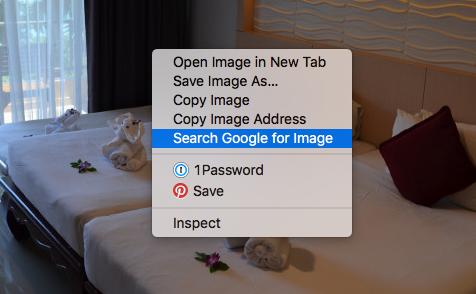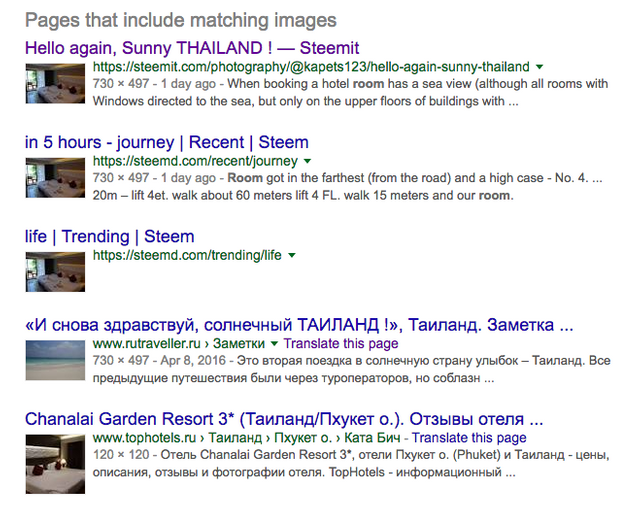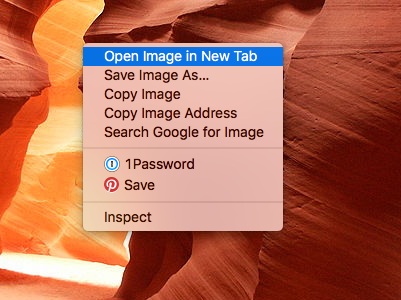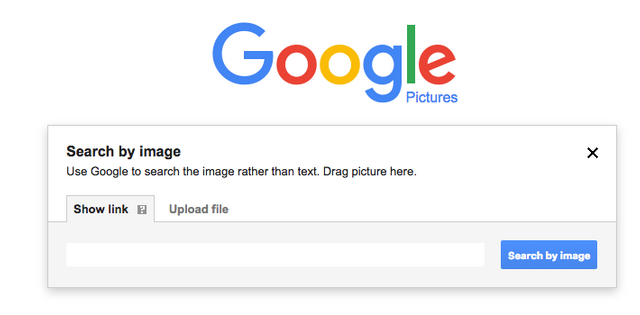How to Track Down Plagiarism from a Website in Another Language

Finding plagiarism when the original source is in another language can be tricky…and more time-consuming than finding plagiarism that matches the language of the original source. If the post seems sketchy to me (user history of plagiarism, the English seems off, etc), I’ll poke around and see what I can find. When I find plagiarism, I’ll leave a comment with a link to the original source to let others know.
Here are the steps I use to track down plagiarism from a website in another language:
Search Google for the images
Right-click on an image in the post and select “Search Google for Image.”

Look for search results listed under the header “Pages that include matching images.”

If you’re lucky and the original source had unique photos, only one or two results will be listed. (This was the case with a recent plagiarized post that was trending.) Next to the listings will be a link to “translate this page.” Click that link to open/translate the page and see if it matches your suspected article. This might be the end of your search. However, if the post uses photos that are more like stock photos, then many websites (in multiple languages) may use those photos and you’ll wind up with a lot more listings to comb through. If that happens, try these next few things.
Search images on Google for a different country
Right-click on an image in the post and select “Open Image in New Tab.”

Now you will get a URL just for the picture. Go to Google for the language you suspect the source is plagiarized from (e.g. www.google.ru for Russian). (Wikipedia has a list of the Google domains for different countries.) Click on the “Pictures” in the upper right corner of the Google page. Now click on the camera icon in the search bar and it will give you a place to put the URL for the image you want to search.

Paste the URL for the photo by itself and search to see what you get.

You may need to do this in combo with the next step and see if you find a common source. Often the plagiarist will use the exact same title (translated) rather than renaming the article, so look for that article title in your search results.
Translate a small piece of text
Google Translate works well enough, but some things don’t quite come out right, so translating it back to the suspected original language and Googling an entire paragraph is not gong to work. You’re not going to find a match. To get around that, find a small piece of text—like one unique sentence—that looks well-translated (i.e. good English). Copy that piece of text and go to Google Translate and translate the text into the language you suspect the original source is in (e.g. if another language popped up when you did your image search or if there’s any mention of a particular country in the user’s other posts).

Search Google for the translated text
Take the translated text and search Google for it. See what results you get. With a small piece of text instead of a paragraph, it’s harder to find an original source. You may need to try several pieces of text before finding one (or more) that are useful and see if you can find a common source. Again, the plagiarist will often use the exact same title (translated) rather than renaming the article, so look for that article title in your search results.
As you can see, this process can be tedious and time-consuming. If the post isn’t getting much attention, it’s probably not worth it. But, if the user starts getting a bunch of attention for one of their posts and therefore stands to get a big payout, I think it’s worth the effort.
If you have more techniques for finding this kind of plagiarism, please leave me a comment!
By the way, this post was inspired by the drama surrounding the trending plagiarized post I linked to above. For more info on that story, check out @firepower's post: Observations Fighting a Serial Plagiarist—True Story!
My process is usually googling a paragraph or two and using quetext.com. Then reverse image search if I think images are plagiarized.
That's cool. Haven't seen quetext.com. It doesn't compare text to other languages, though.
That's the tricky part :(
Pro tip: Combine the two mentioned above
Try adding the first or 2nd sentence in that search combo, if that doesn't work. Pick out a random sentence from the text and use that one instead.
P.S.
I don't believe that using google "for other countries" helps the search, since google will auto translate on it's own to find the original source.
The most effective way is to use the "complex" picture + 1st sentence in text search combo, google seems to really like this one and tend's to bring up the original source in seconds, if this search method is used.
Thanks for the info! The other versions of Google are just something I have tried to see if I can find what I'm looking for. Maybe that's a waste of time then....Hmm....
It is, but translating the text into a language you "suspect" it's originally written is a smart search as well...
Thx for sharing. Useful and informative post.
Thanks!
Thanks again! It's appreciated.
You're welcome!
Great post! I wonder if a whale will start offering bounties for proven plagiarism. No one wants the Salem Witch trials again, but we also need to protect this platform from the existential risk a large amount of plagiarism would cause, not to mention, identity theft. Keep up the great work, babe!
Thanks ;)
I figured the "search by image" thing was common knowledge, but as a photographer I use it all the time, so that may be the source of my skewed perception. Very good advice here, for sure. I suggest everyone use that feature if there's any question about an image's authenticity.
Absolutely. I never upvote any photo without checking it first.
Excellent post with useful comments for anyone who wants to know how to go about catching plagiarism. A must read for newbies!
Thanks!
Sorry I missed this:)